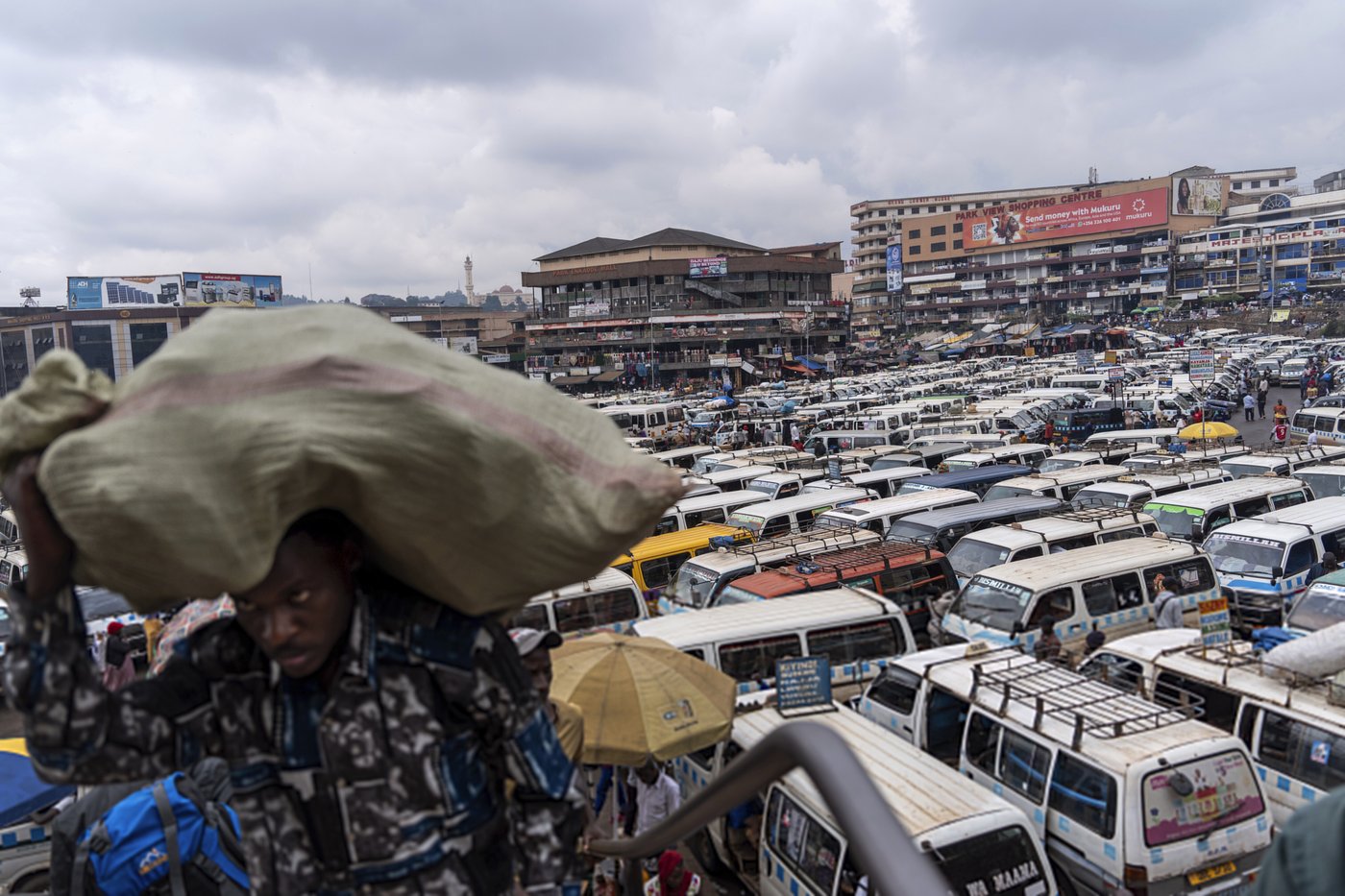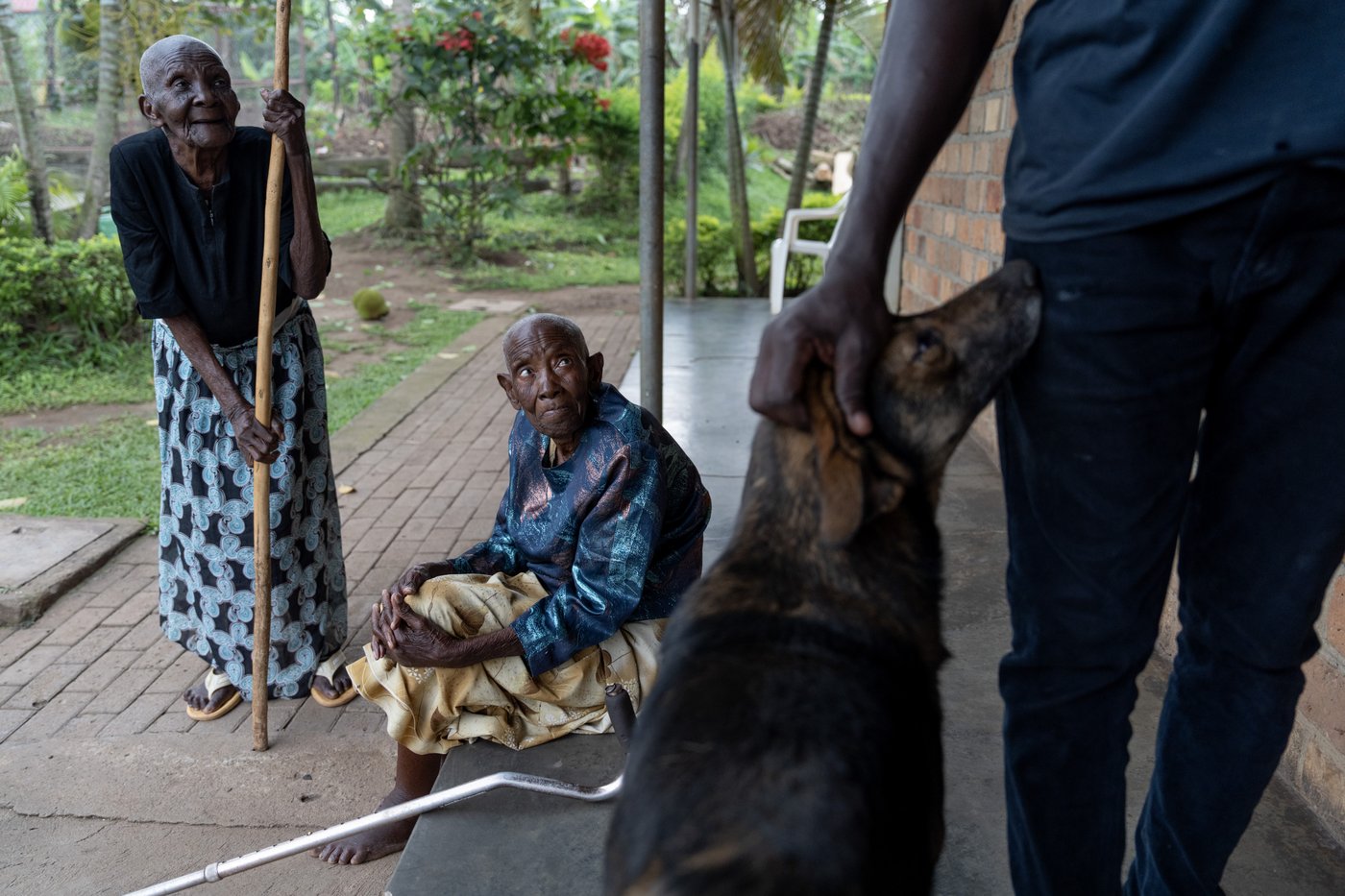Elevate your local knowledge
Sign up for the iNFOnews newsletter today!
Sign up for the iNFOnews newsletter today!
Selecting your primary region ensures you get the stories that matter to you first.

KAMPALA, Uganda (AP) — In the packed aisles of this city’s largest market, every passageway is choked with people, but none of them are old. At an elementary school graduation, hundreds pack the audience, but no grandparents appear to be among them. Even in the pharmacies and optical shops up and down this 1.8-million-person capital’s clamorous downtown, the faces are entirely young.
Follow the frenetic streets of Uganda’s cities to the web of dirt roads pockmarked by craters and bordered by banana trees, though, and thousands of villages await, each a smattering of huts of mud and houses of crumbling cement, seas of red soil splashing with walls of green vegetation, and churches beneath humble steeples or even humbler roofs of corrugated aluminum.
In each of them, Africa’s aging revolution comes into focus, with burgeoning communities of the old. It is a reason for celebration on a continent marked by hardship, but for those rushing to keep up with this new population’s needs, it is also a reason for fear.
“We are not ready,” says Carole Osero-Agengo, who leads Africa programs for the nonprofit HelpAge International from Nairobi, Kenya. “There is development, but we don’t have an aging lens. There are programs, but they don’t cover the whole country. There are so many gaps, but those gaps are being filled so slowly.”
The shift underway across the continent is striking. Advances in nutrition, sanitation and clean water; robust responses to HIV and malaria; and dramatic declines in infant mortality have combined to bring longer lives.
From 2000 through 2020, all of the top 20 life expectancy gains across the globe were posted by African countries.
Gains in life expectancy have fueled growing populations of older people virtually everywhere in the world. But the speed at which it is happening in Africa is unprecedented.
Many rich countries took a century to see their percentage of older residents double. Uganda is expecting to quadruple its share of older people over the course of just 40 years.
Similar projections repeat across sub-Saharan Africa.
“We haven’t had the luxury of time that the developed world had to prepare,” says Dr. Ogugua Osiogbu, the head of geriatrics at National Hospital in Abuja, Nigeria, and one of the continent’s few specialists in medical care for older people.
Though the African Union and varied countries have drawn up plans to address their aging populations, implementation has been uneven. Few goals have been addressed in any substantive way and older people remain absent from most governmental priorities.
In Uganda, like elsewhere in Africa, there has been little government investment in pensions, health care and caregiving support for the country’s oldest. Little U.S. aid goes directly to groups focused on the aging population, but the destruction of the USAID program under President Donald Trump has nonetheless made things worse.
Paired with cutbacks by some European countries, the loss in aid has translated to the demise of antipoverty programs, food distribution operations and AIDS clinics, all of which benefit the elderly. Help for victims of natural disasters, which have an outsized impact on the old, have faced the chopping block, as have surveillance and response to infectious diseases, to which older people can be more susceptible.
Reach One Touch One relies strictly on donations. It has struggled to keep up as costs have risen, cutting back food deliveries from monthly to every two or three months. While it is the largest organization of its kind in Uganda, ROTOM operates in just two of the country’s 146 districts.
“It is a drop in the ocean,” says Grace Nabanoba, a field worker for the agency. “The need is so deep.”
At the time of ROTOM’s founding in 2003, Uganda counted just over 900,000 people 60 and older.
Today, there are more than 2.2 million.
Life, for many of them, is blanketed in disappointment and hardship and pain. But on a continent that, for as long as anyone has tracked lifespans, has lagged the rest of the world, the surprise of a longevity revolution is thrilling.
At a small home ROTOM operates to care for seniors, three women sit beside one another, erupting in a fit of delight when visitors appear. One woman, Veronica Nakattee, who’s unsure of her age, throws her cane to the ground in excitement. Another, an 80-something named Donanta Nanyanzi, breaks into a dance. The third woman, Dorothy Ndibanje, at 93 the oldest of the trio, stays seated, but allows a huge smile to spread across her face.
Nanyanzi and Nakattee tease Ndibanje about her toothless grin.
“I sold off my teeth,” she replies, prompting a round of laughter.
“We’re always giggling like this,” Ndibanje says. “We’re so happy to be alive!”
___
Matt Sedensky can be reached at msedensky@ap.org and https://x.com/sedensky




This site is protected by reCAPTCHA and the Google Privacy Policy and Terms of Service apply.
Want to share your thoughts, add context, or connect with others in your community?
You must be logged in to post a comment.